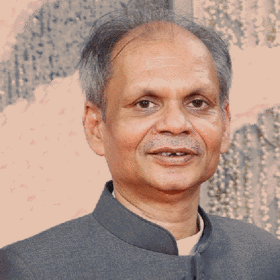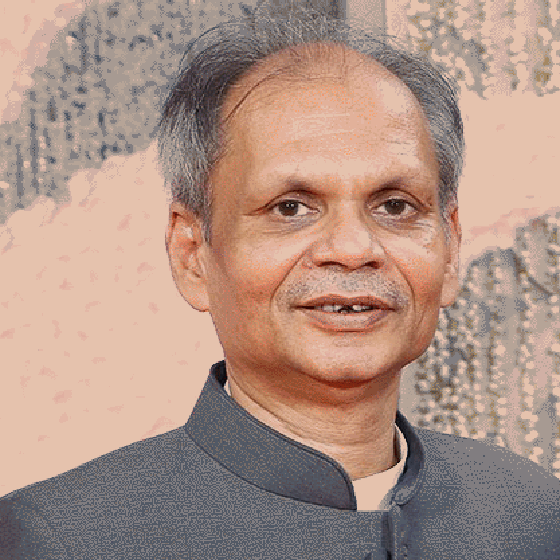Isavasyopanishad: A Study According to Sri Vedanta Desika

In paying tribute to the genius of one who has by his stupendous labours done more than any other single thinker to the cause of Dharma-sistra study in India, I wish to present a few salient points in the Upanisadik thought as expounded by one of the finest flowers of Sri Vaisnava thought in India, I mean Sri Veikatanatha, otherwise popularly known as S17 Vedanta Dosika. Sri Vetkatandtha commented on only one Upanisad, the Isavasyopanisad. He considered that this Upanisad was sufficient for all purposes and difficulties on the path of Realization, which he considered is the proper dharma of every man. This Upanisad is the friend of the Universe, Visvamitram. That this claim has stood the test of age, even as the Gité has, is proved by influence on the minds of men of all ages in India, The Indian Renaissance thinker has to study the implicationsof this profoundest of Upanisads. Gandhi, Aurobindo, and Tagore, who in the words of Sir Sarvapalli Radhakrishnan, show great “promises of a great Dawn,” owe their finest inspirations and synthesis to this Upanisad. Not that other Upanisads do not contain valuable instruction, but this Upanisad gathers within it synthesis of great worth and moment to Humanity.
‘The Isavasyopanishad shows a synthetic way of realization, of works, of unity, of synthetic conquest and triumph and synthetic Ananda, Later literature appears as it were to be comments on this wonderful Upanisad. ‘That some Mantras are taken from other Upanisads, especially Brhadaranyaka, and others, does not in the least affect the Integral nature of the synthesis presented in this piece.
The Analysis of the Upanisad shows that it tries at the very start to synthesise the knowledge of the Omipervasive Divine Being with the doing of individual duties. The duties immediately take the form of self-lessness or fruit-renouncing nature. The Upanisad itself is the concluding portion of he Véjasaneyi Samhita, and that means that all works, sacrifices, nitya and naimitka, should be appropriated to the growth of knowledge of Brahman:
संहितोदाहत॑ सर्व विनियोगपृथकत्वत: ।
विद्यार्थ स्यादिति व्यंक्तु निबन््धौउस्य तदन्तत: ॥( 7)
The unitary practice of knowledge of God and works devoted to the enlargement or increase of one’s consciousness culminates in the Vision of Unity which is the aim of all Upanisadik instruction.
‘The first three mantras form the pre! of the Guru to his disciple, and these form the introduction of the Guru to his disciple, and these form the introduction to the entire thought of the Upanisad. Whatsoever is changing and transient is pervaded by the Lord, knowing this one should, giving up all sense of possession and avarice, enjoy the world of His. Man should not surrender his works based on the knowledge of the all-pervasive Brahman, since such action does not cleave to man, Failure to know or do works with the sense of renounced enjoyment makes one a self-killer, and the destiny of such a person after death is not the solar orb or supreme status but the unending gloom of interminable darkness
The fourth mantra takes up the threads of the first half of the first mantra which intimates the indwelling all-pervading nature of God. in a few vigorous choice phrases His Omni pervasiveness and Omnipresence are described in apparently contradictory terms so as to indicate the wonderful luminous presence everywhere. The height of this wonder is reached when the Seer describes that “Air upbears the Waters’ “tasminnapo matarisva dadhati”. The next verse repeats the same idea in order to emphasize the excellent transcendent nature of Sarveéa,
The sixth mantra points out the fruits of the knowledge of Lord’s omni pervasion. One does not recoil from any thing. The seventh proceeds forward and points out that ‘He who perceives the Oneness of the Lord does not suffer from delusion or sorrow’.
The eighth mantra is all important. No commentator, ancient or modern, other than Sri Veakatanatha has explained it properly. +1 Venikatanathe displays loyalty to the grammatical construction of the mantra which contains two groups of words, one in the nominative case and the other in the accusative case. The two groups accordingly should refer to two different persons, God and the soul, the soul in this case being the mukta, freed soul, which has attained the highest state. This also shows that the two groups may interchangeably refer to God and the freed soul. This identity in quality it is that makes it possible for the individual to meditate and realize the Supreme as the Self-Sotham asmi (16th mantra) ‘He am I.”
HE ATTAINS THE RADIANT, BODILESS, SCARLESS, SINEWLESS, PURE BEING, WITHOUT SIN, (HE) SEER, SELF-CONTROLLED, CONQUEROR INDEPENDENT, BEARS THE REAL NATURE OF THINGS FOR INNUMERABLE YEARS.
Or
He (the supreme Brahman) Omniscient, Intelligence, Lord, Independent, who from eternal years determines the real nature of all things, pervades the pure (self), without (karmik) body, scarless, sinewless, freed from evil (and Good).
The above is the two-way translation according to Sri Veikatanitha, This interpretation does not militate against the doctrine of Unity. it shows that creation is not a fiction but a real creation. The individual soul achieves real height and peace and glory of equality in all aspects except the creation of the world (jagadvyaparavarjam). Then come the two triads of the most intriguing verses, referring to the synthesis of Avidya and Vidya and Asambhiti and Sambhiti.There are several views and no one is agreed as to the exact meaning. One view holds that Avidya is ignorance, and this ignorance produces action. This action thus is Avidya. This action is further identified with vedic ritualistic performance, kamya-karma which produces blindness. When practised along with Vidya it helps the surmounting of the death and attainment of Immortality. Another interpretation makes ignorance the consciousness of many alone, whereas vidya or knowledge means consciousness of unity alone. The integral truth is the unity in multiplicity and multiplicity in unity?
According to Sri Veikkatanitha, avidya means vidyetaréother than vidya, that is that which is also next and nearest to it, and that is action, karma. This is the karma _ prescribed in the second verse; kurvannevoha karmani….. This is right action, consecrated action which does not touch man, action done in the consciousness of the omnipervasive Brahman, action suffused with renunciation of fruits and self-possession. Such is avidya.
I shall not dilate on the controversies about these two terms as I shall be doing so elsewhere at length.
‘The next group is equally interesting, and the interpretation of Sri Vedanta Desika is remarkable. Sri Sankara identifies these two terms with destruction and birth and pleads for their transcendence. The dialectical movement, it is assured, is overcome by the realization of the height. What is through out forgotten in the analysis of both the groups is that the terms avidyaya mytyum tirtva and vinaéena mylyum tirtva are not properly explained. How can ignorance lead to conquest over death? How can destruction lead to conquest over death. Certain further explanations are needed to make them accept
able. It is this that made Sri Veskatanatha undertake to explain these terms otherwise so as to be in tune with the integral meaning of the Upanisad.
Shree AUROBINDO, an integral thinker of great Vision, holds that the ideal of the Upanisad is “to embrace simultaneously vidya and avidya, the one and the many: to exist in the world but to change the terms of death into terms of immortality, to have freedom and peace of non-birth simultaneously with the activity of birth, Death is the constant denial by the All of the ego’s false self-limitation in the individual frame of mind, life and body.” Here the meaning of non-birth is birthlessness, and this is the counter-pole of birth. Birth is the quality of manyness, whereas non-birth is the quality of self-identical existence, and their conciliation is brought about through the pursuit of Divine Transcendence that does not follow exclusively either the birth-pursuit or the birthlessness-pursuit.
There is another interpretation which is also interesting. It considers that asambhati refers to the lord of destruction, Rudra Siva and sambhiiti to the Lord of Creation, Brahma; worship of any one of the two gods exclusively leads to ignorance and darkness, Both the functions belong to the Supreme Lord who is spoken of as sarva-vyapin and is declared to be the Origin of all the three processes of creation, sustenance and destruction: janmadyasya yatah (.i.2.Vedanta Sitra). The one supreme Godhead should be worshipped as the Lord of both, and this will lead one to the two-fold realization.
Sri Venkatnatha interprets the two terms in a very luminous manner quite distinct indeed from the rest, Asambhati means the destruction of all obstacles to sambhati or divine birth or communion, Sambbiiti is divine birth (jaana-sambiti). It is the brahmic experience (Samadhi) that is to be sought afler and the obstacles to it ought to be overcome, Hence destruction (vinaSa) means the destruction of obstacles {0 realization, and. therefore when this destruction happens there is also conquest or crossing over death. The two are limbs of the knowledge of the Omnipervading God. They sustain and energize the growth of His consciousness and make for the rending of the veil that covers the face of the self mentioned and prayed for in the following mantra:
हिरण्मयेन पात्रेण सत्यस्यापिहितं मुखम् ।
तत्त्व॑ पूषनपाबृणु सत्यधर्माय दृष्टये ॥(१५)
Thus according to the Sri Veskatnatha, the first triad is not repeated bys the second; on the other hand, the second triad belongs to the realm of upasana, praxis, and the last group of mantras 15-18 are prayers to the Supreme of the form of Pagan the protector, the Sun, Prajapati, and Yama, to reveal the form effulgent and auspicious of the indwelling Lord in them and in Him, who is the same as his own self, Sotham asmi, He I am.
The description of the darkness into which men are said to enter through isolated or atomistic conduct (in verses 9, and 12) is similar to the description given earlier in the third mantra, The reality of the dark spheres or planes of consciousness of ignorance, the reality of sin, and the sin of non-performance of action and wrong performance of action, the sin of not fulfilling the dharma of the self, which is to perceive its Self as the Supreme Lord indwelling in all, are clearly enunciated. They result in the entrance into darkness. All these are activities comparable to or indeed are activities that lead to suicide of the self. To realize the divinity of knowledge and selfless consecrated action, the unity of religious consciousness of utter dependence on the Supreme and the mystic consciousness of over-coming all restraints and obstacles to that realization, is the real synthesis of the integral consciousness. Religion and Mysticism are clearly represented by the figures of sambhati and asambhat Both lay claim to vision and knowledge, and yet one-sided or unilateral action precipitates them into darkness as much in the lower as in the higher states. The occult secret is their diunity of dynamism.
‘The last four mantras are said to be prayers. The Lord as the protector, is the Kratu, who remembers the Satvik sacrifice performed by the individual as instructed in the first verse-tena tyaktena bhuajithah. The most glorious vision thus becomes man’s through the prasida of God and not otherwise. Surrender, prapatti, is thus intimated with the words, nama uktim vidhema, and it gets its complimentary prasida, grace. This last is one of the most important features of the doctrine of Realization according to Sri Vaisnava philosophy.


lypfqJRGwng